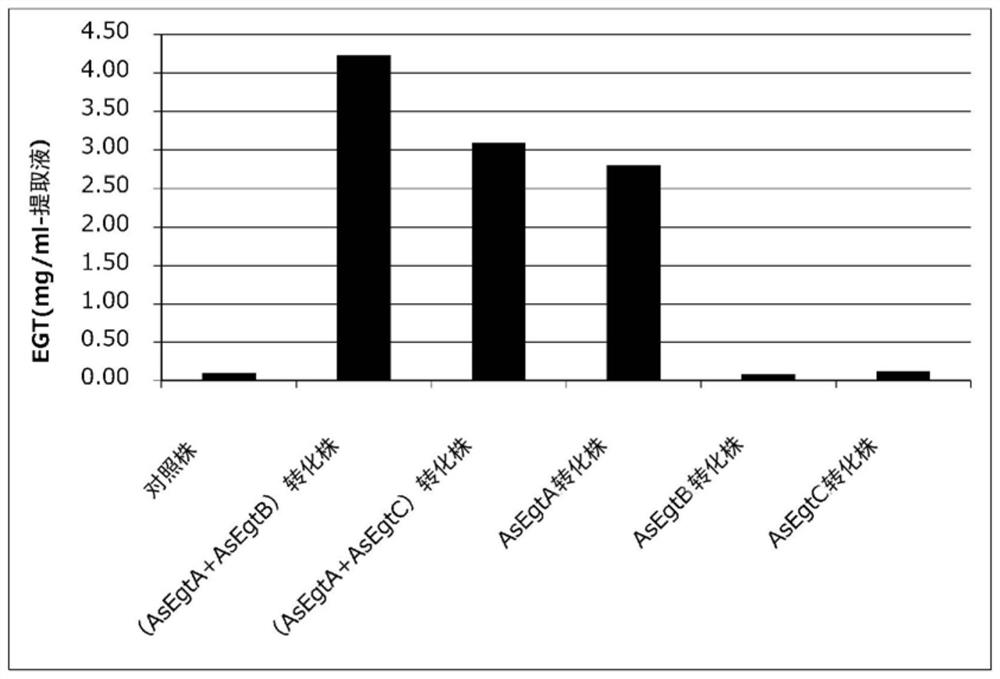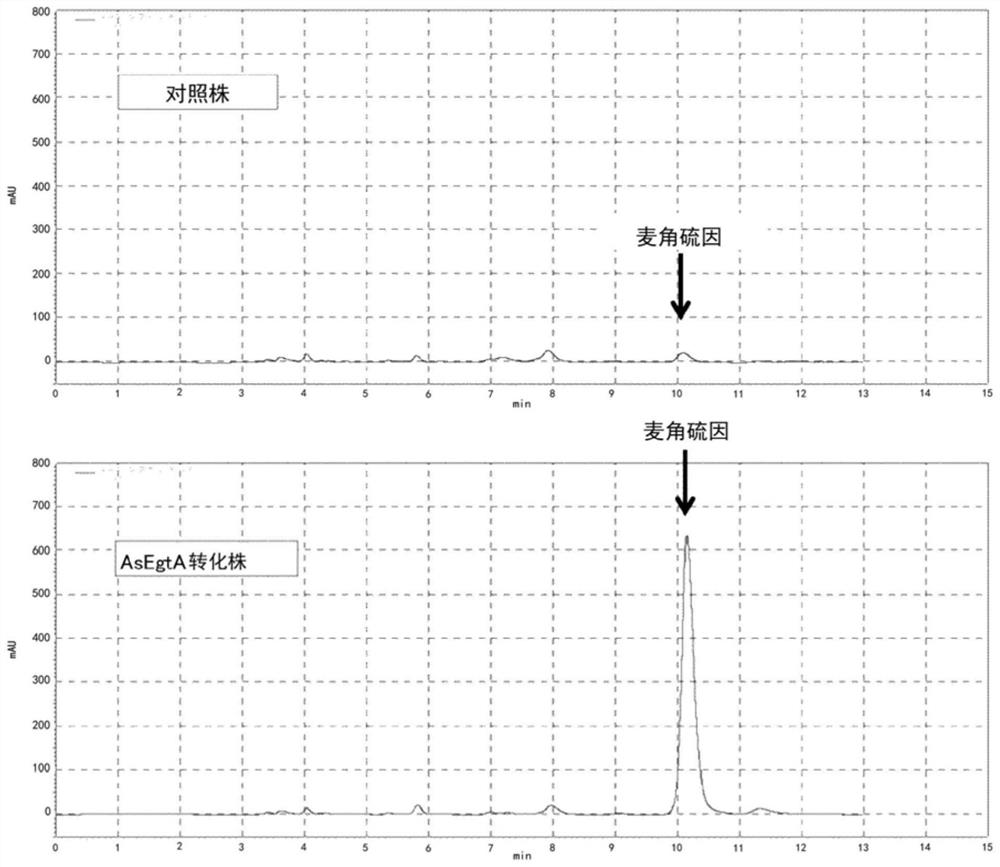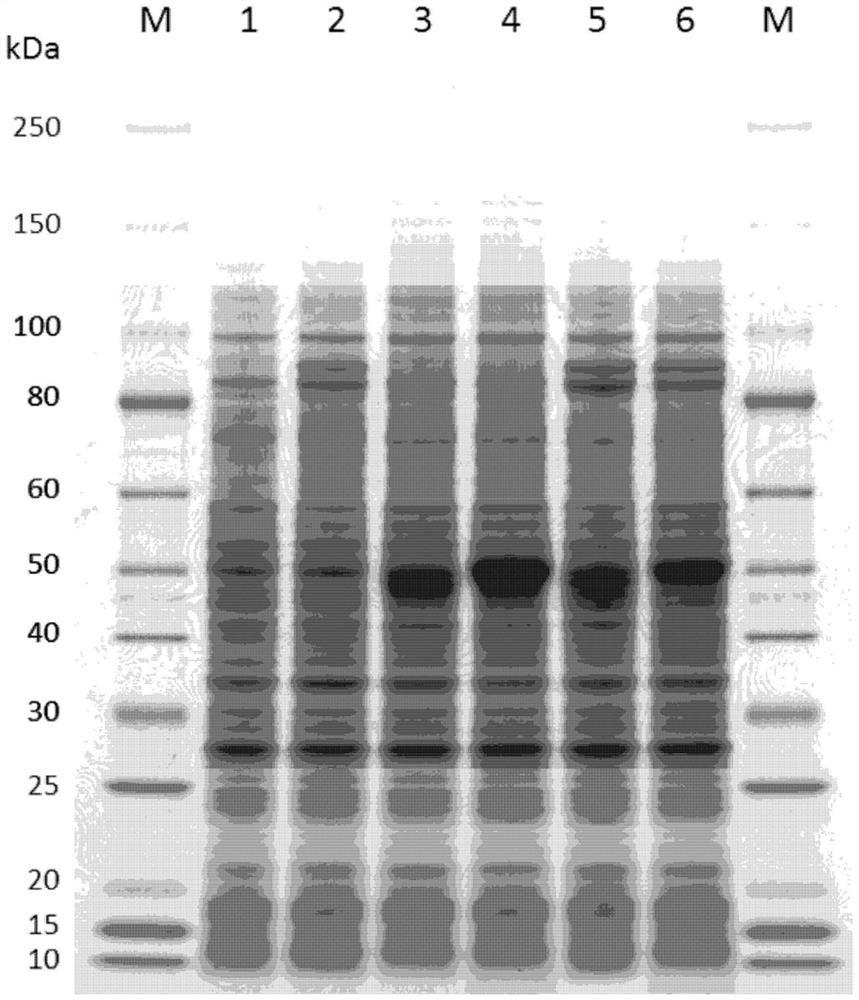Transformed filamentous bacteria with enhanced ergothioneine production capacity and preparation method for ergothioneine
A technology of ergothioneine and filamentous bacteria, applied in the direction of biochemical equipment and methods, methods based on microorganisms, transferase, etc., can solve the problems of no ergothioneine production, no ergothioneine production capacity, etc., and achieve simple production Effect
- Summary
- Abstract
- Description
- Claims
- Application Information
AI Technical Summary
Problems solved by technology
Method used
Image
Examples
preparation example Construction
[0151] (the preparation method of ergothioneine of the present invention)
[0152] The method for producing ergothioneine of the present invention includes at least a step of causing histidine and cysteine to act on the transformed filamentous fungus of the present invention to obtain ergothioneine. As for the method for making histidine and cysteine act on the transformed filamentous bacteria of the present invention, any enzyme possessed by the transformed filamentous bacteria can be used as long as histidine and cysteine can be brought into contact with the transformed filamentous bacteria. The method for producing ergothioneine is not particularly limited. For example, by using a medium containing histidine and cysteine and suitable for the growth of transformed filamentous bacteria, it can be used in various cultures suitable for transformed filamentous bacteria. A method for preparing ergothioneine by culturing transformed filamentous bacteria under conditions. ...
example 1
[0172][Example 1. Preparation of DNA construct inserting gene AsEgtA, AsEgtB or AsEgtC]
[0173] (1) Search for target genes
[0174] In Neurospora crassa, NCU04343 and NCU1136 are known as enzymes involved in ergothioneine biosynthesis (see Non-Patent Documents 3 and 4). In addition, Non-Patent Document 3 suggests the possibility that NCU04636 is related to the biosynthesis of ergothioneine. Therefore, the genes encoding the above three enzymes of Neurospora crassa were used as query genes, based on Aspergillus sojae (Aspergillus sojae) The genome sequence of the NBRC4239 strain was searched for regions with relatively high sequence identity to the genes encoding NCU04343, NCU04636, and NCU11365, respectively. The genome sequence of Aspergillus sojae NBRC4239 strain was searched using the BLAST program (tblastn) (DDBJ / EMBL / GenBank DNA databases, Accession numbers for the 65 scaffold sequences; DF093557-DF093585, DNA RESEARCH 18, 165-176, 2011).
[0175] As a result, the g...
example 2
[0207] [Example 2. Production of transformed Aspergillus sojae (1)]
[0208] (1) pyrG disrupted strain derived from Aspergillus sojae NBRC4239 strain
[0209] After precipitation of each DNA construct with ethanol, it was dissolved in TE, and the DNA solution prepared to the desired concentration was used in the pyrG disrupted strain from Aspergillus sojae NBRC4239 strain (48 bp upstream, 896 bp coding region, 240 bp downstream of the pyrG gene) in the following order. ) conversion.
[0210] (2) Transformation of pyrG-disrupted strain derived from Aspergillus sojae NBRC4239 strain
[0211] Conidia of the pyrG-disrupted strain derived from Aspergillus sojae NBRC4239 strain were inoculated into 100 ml of a polypeptone dextrin liquid medium containing 20 mM uridine in a 500-ml conical flask, and shaken cultured at 30°C for about 20 hours. Then, the bacteria were recovered. Protoplasts were prepared from the recovered bacterial cells. The obtained protoplasts and 20 μg of the ...
PUM
| Property | Measurement | Unit |
|---|---|---|
| molecular weight | aaaaa | aaaaa |
| molecular weight | aaaaa | aaaaa |
| molecular weight | aaaaa | aaaaa |
Abstract
Description
Claims
Application Information
 Login to View More
Login to View More - R&D
- Intellectual Property
- Life Sciences
- Materials
- Tech Scout
- Unparalleled Data Quality
- Higher Quality Content
- 60% Fewer Hallucinations
Browse by: Latest US Patents, China's latest patents, Technical Efficacy Thesaurus, Application Domain, Technology Topic, Popular Technical Reports.
© 2025 PatSnap. All rights reserved.Legal|Privacy policy|Modern Slavery Act Transparency Statement|Sitemap|About US| Contact US: help@patsnap.com



